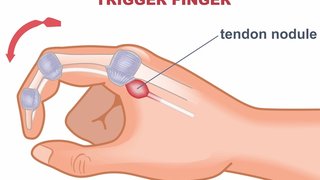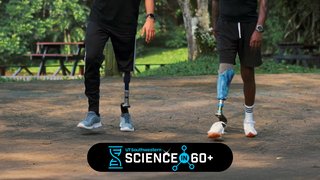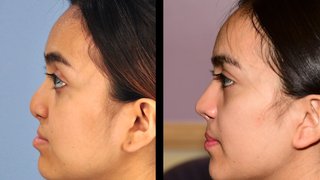How to treat ‘Ozempic face’ and other effects of significant weight loss
June 26, 2023

Semaglutide, better known by brand names Ozempic, Wegovy, and Rybelsus, was originally developed to help people with Type 2 diabetes control their blood sugar. But the medications’ effectiveness at producing significant weight loss – 15%-20% of body weight for some patients – has propelled it into the public consciousness.
Celebrities, social media influencers, and a growing number of Americans have shared success stories and slimmed-down selfies on social media. But some have also pointed to an unanticipated side effect: “Ozempic face.”
What is Ozempic face?
The buzzy term, coined by a New York dermatologist, describes the gaunt or hollow look of sagging facial skin that can appear when people lose excess fat in their cheeks or neck. Massive weight loss through medication, bariatric surgery, or diet and exercise decreases the amount of fat under the skin throughout the body, but loose elastin fibers remain, often creating the appearance of excess skin hanging from the face and neck area.
Weight-loss drug side effects: Ozempic face and more
For patients who lose 50 to 100 pounds, there is often a significant deflation in many parts of the body, leading to an unappealing change in appearance. Extra skin gathers on the body, including the belly, buttocks, back, chest, breasts, legs, and arms.
The board-certified plastic surgeons in UT Southwestern’s Department of Plastic Surgery perform a range of procedures tailored to patients who have excess fat and/or skin after losing a lot of weight, including abdominoplasty, belt lipectomy/body lift, arm reduction, upper body lifts, thigh reduction, and facial rejuvenation. In fact, I published the first textbook on the subject, "Body Contouring After Massive Weight Loss," which is still considered the gold standard for plastic surgeons.
At UTSW, we offer patients safe, effective surgical and nonsurgical procedures to smooth and contour key problem areas, including:
As more people achieve significant weight loss – whether it’s through obesity medications, bariatric surgery, or lifestyle modifications – understanding the treatment options for dealing with excess skin on your reshaped body may prove invaluable to your long-term health goals.
Ozempic face and neck
Common concerns: After losing 40 to 50 pounds, many patients are concerned that their face looks gaunt, almost too thin, and a hollow appearance under the eyes or in the cheeks can make them look older.
Ozempic face and neck surgery options:
- Injections: Lasting a few months to more than a year, dermal fillers such as Juvederm or Restylane Lyft can restore facial fullness for a smoother, more youthful look. We can also consider fat grafting, which removes fat from the hips or abdomen with liposuction techniques and injects it into the cheeks, under the eyes, or around the lips, chin, mouth, or temples.
- Facelift: Some of my colleagues at UTSW pioneered the individualized component face lift (ICF), which rejuvenates the appearance rather than simply tightening the skin. Our plastic surgeons assess your face, neck, and eyebrows individually and collectively to assess your unique facial structure and anticipate changes over time to fat and tissue deposits.
- Neck lift: Also called a rhytidectomy, a neck lift reduces excessive skin, double chin, and “jowls.” Our plastic surgeons can remove and redistribute skin, fat, and muscle tissue using precise incisions that can be hidden within the hairline, back of the neck, and behind the ears.
Related reading: New anti-obesity drugs are closing gap between dieting and bariatric surgery
Ozempic breasts, chest, back, and arms
Common concerns: Much like your lower body, excess skin in the “upper trunk” area tends to be a 360-degree problem and not localized to one region. Loose skin in these areas can cause chafing, irritation, general discomfort, bulges of the mid and upper back, chest excess in men, unattractive breasts in women, and upper arm “bat wings” that can prevent patients from wearing tight or sleeveless clothing.
Ozempic breasts, chest, back, and arms surgery options:
- If multiple areas concern you, we can discuss an upper body lift to reshape several areas in one procedure. An upper body lift creates tighter body contours that feel more comfortable and look smoother under clothing. This procedure can be tailored to your problem areas and often involves 360-degree skin removal and reshaping.
Or we can discuss procedures to address specific areas, such as:
- Breast surgery to reshape, reduce, augment, or lift the breasts to a natural position in women
- Surgery to reduce excess breast tissue in men
- Skin reduction surgery to eliminate rolls in the upper back
- Arm lift, or brachioplasty, to remove extra skin and fatty tissue from the armpit to the elbow. The upper arms are connected to the chest wall through the armpits, so to get the best results we must reshape the armpits as well.
Ozempic buttocks, abdomen, and flanks
Common concerns: The midsection tends to carry the most excess skin after significant weight loss. Love handles and sagging skin can cause painful rubbing and chafing, and patients say they can’t wear the clothing they want comfortably because they still look heavy due to excess skin.
Ozempic buttocks, abdomen, and flanks surgery options:
A belt lipectomy, also called a lower body lift, is a more effective and comprehensive alternative to the tummy tuck. Rather than tightening just the skin on the front of the abdomen, belt lipectomy removes excess skin from the abdomen, flanks, and buttocks in a single, 360-degree procedure.
The surgeon will make incisions around the waist, removing skin and fat in the shape of a boxing championship belt – wide in front and narrow in the back. This creates a flatter belly, lifts the pubic area, defines the waist, and raises the skin of the thighs and buttocks to a more natural position.
Keep in mind that tummy tucks and belt lipectomies can’t remove or hide visceral fat, which is stored deep in the belly and wraps around organs such as the liver and intestines. Visceral fat can make the belly protrude.
Depending on your body shape and genetics, it may take longer to lose visceral fat compared with fat between the muscles and skin. For longer-lasting results, talk with your surgeon about whether you should lose more visceral fat before plastic surgery.
Related reading: Tailoring the dress or suit: The benefits of skin removal surgery after major weight loss
Ozempic thighs
Common concerns: “Saddlebags,” or excess of the outer thighs, or excess skin and fat on the remaining thighs can cause an unsightly look and chafing, which can make it painful to walk or exercise.
Ozempic thighs surgery, specifically a thigh lift, can reshape the inner and outer thighs. Using incisions between the legs, usually on the inner thigh, we remove excess fat and skin and tighten the remaining skin.
Related reading: The benefits of skin removal surgery after major weight loss
Preparing for plastic surgery after significant weight loss
To achieve the best outcome for any skin reduction procedure, we recommend you maintain a stable weight for three to six months before plastic surgery. Getting a procedure too soon can result in body changes you might not be satisfied with after surgery.
We’ll also want to ensure you are getting adequate nutrition, which supports healing after surgery. Bariatric surgery and some weight-loss medications can interfere with how your body absorbs certain nutrients. Our specialists can help optimize your nutrition before plastic surgery to achieve better, longer-lasting results.
Most importantly, ask your plastic surgeon about their experience working with patients who have had significant weight loss. You need to feel confident that you have chosen an expert surgeon who understands your unique needs.
“Ozempic face” doesn’t have to be a permanent side effect of significant weight loss. Our board-certified plastic surgeons are experts who can help you achieve a look that reflects your newfound health and freedom.
To visit with a plastic surgeon, call 469-532-6961 or request an appointment online.











